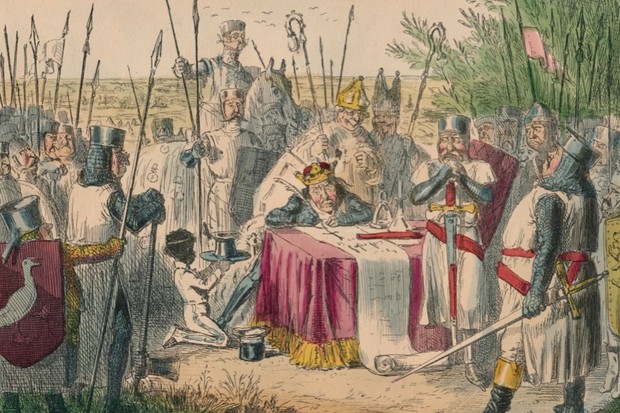There are a few rights of passage in law school. Many of them occur in constitutional law.
For instance, constitutional law is where most students will learn for the first time that judicial review, the power to declare laws unconstitutional, was not a power granted to the Supreme Court by the Constitution. It is a power that the Supreme Court declared for itself in Marbury v. Madison, a decision interpreting an act of Congress.
Most law students are also shocked to learn that the Bill of Rights did not originally apply to the states. The Supreme Court merely interpreted the Fourteenth Amendment to mean that select provisions of the Bill of Rights (eventually most of them) applied to the states. The Fourteenth Amendment was drafted and ratified by Congress.
Also among these rights of passage are the abominable cases that your constitutional law professor lectured about in hushed disapproval. These are the cases that are an embarrassment to the bar. My colleague Dean amusingly calls these cases “anti-canon.”
As a very young radical in law school, I struggled—and continue to struggle—to make sense of what the principled view of constitutional law should be, especially given these abominable cases.
Of course, the correct answer is that the State is unfit to exist. This is because every State is necessarily predicated upon an illegitimate monopoly over legalized violence. However, this ethical principle does not always illuminate the correct intellectual path a young libertarian attorney should take. Like it or not, the State exists.
For a libertarian anarchist, it is a difficult, perhaps impossible, juxtaposition to concurrently maintain these three principles: 1) the Federal Government has no right to dictate a states’s own policy; 2) legislatures create illegitimate law by fiat—positive law; and 3) a judge’s duty is to say what the law is, and not what it should be, the latter being a dire violation of separation of powers—this is the sacred federalist axiom.
No better is this conflict exemplified than the contrast between two cases which are universally abhorred by “respectable jurists” throughout the United States.
In 1905’s Lochner v. New York, the Supreme Court struck down a New York state law which limited the number of hours bakers were allowed to work in a week. The Court found, inter alia, that the law violated the Equal Protection Clause of the 14th Amendment.
“Respectable jurists” across the country detest the Lochner Court’s decision because of its conservative activism in creating a “right to contract” that was not enumerated in the Constitution.
There is a problem with the federal government striking down a state’s legislature. The founding ethos of the American system rests upon the theory of popular sovereignty—the idea that a nation’s ultimate source of political power rests with its people. In the American system, the will of the people is (theoretically) expressed through their representatives in the legislature. As fellow anarchist libertarians, many of you likely scoff at this notion. I understand, but it is nothing to shake a stick at. The entirety of the western liberal tradition has culminated with this theory, from the ancient Anglo-Saxons to the Declaration of Independence
On the other hand, as a libertarian anarchist in *the current year,* it is more than apparent that a legislature may trample a man’s rights as utterly as any despot. The ruling in Lochner is satisfying in that the Supreme Court actually intervened on behalf of individual liberty.
That aside, a progressive Supreme Court may endorse a state policy which is completely antithetical to human liberty. The banner case for this is Buck v. Bell, perhaps the Supreme Court’s greatest abomination.
In 1927, the Supreme Court upheld a 1924 Virginia state statute providing for the sterilization of “mental defectives” who would, “become a menace” to society if discharged. Under this ruling, approximately 60,000 American citizens would be forcefully sterilized through the 1970s, when the policy was largely discontinued. The Buck ruling is arguably still binding precedent and could theoretically be used to justify forced vaccination.
I had actually set out to write this article as a deep dive on Buck v. Bell. I intended to lambaste the progressive ideology behind the eugenics movement and the Progressive Era of the Supreme Court. This is forthcoming.
Instead, this article took on a life of its own when I began to research Justice Oliver Wendell Holmes, Jr., the author of the Buck v. Bell opinion.
Holmes was a eugenicist. However, an honest examination of his judicial philosophy will not allow me to chalk the Buck decision up solely to a progressive-activist Supreme Court. The man was a complex beast.
No, the common thread running through all abominable Supreme Court decisions is not judicial activism, nor even the progressive agenda (although a common culprit). It is positive law.
Black’s Law Dictionary defines “positive law:”
Social perspective of a legal rule’s validity being authorized by law and socially accepted versus being based on natural or moral law. View of man-made law as posited by man for man, rather than being fair.
In Lochner, it was the New York legislature that created an affront to liberty by conjuring up policy by diktat. In Buck, the controversy began when the Virginia legislature passed a law allowing for the involuntary sterilization of the “unfit.”
Of course, if I could wave a wand and disappear the convention of imposed positive law, I would. Perhaps as an end-goal, but not a practical reality.
Instead, this practitioner must view the state of the law with cynical bemusement. Jurists and counselors grapple with mutant precedent borne by legislative fiat. The law is no longer tended, nurtured, and kept, as it was in the canon of English common law. It is synthesized, manufactured, and packaged.
The mire of this bastard jurisprudence beckons. As a practitioner, one must wade in the muck, but always with an eye for what once was and what could become again.

